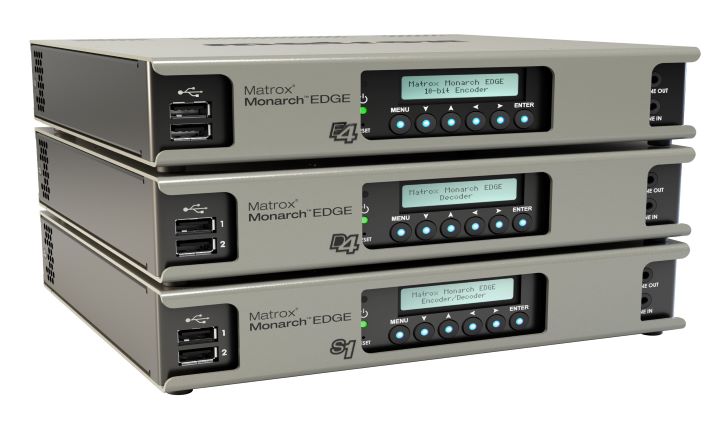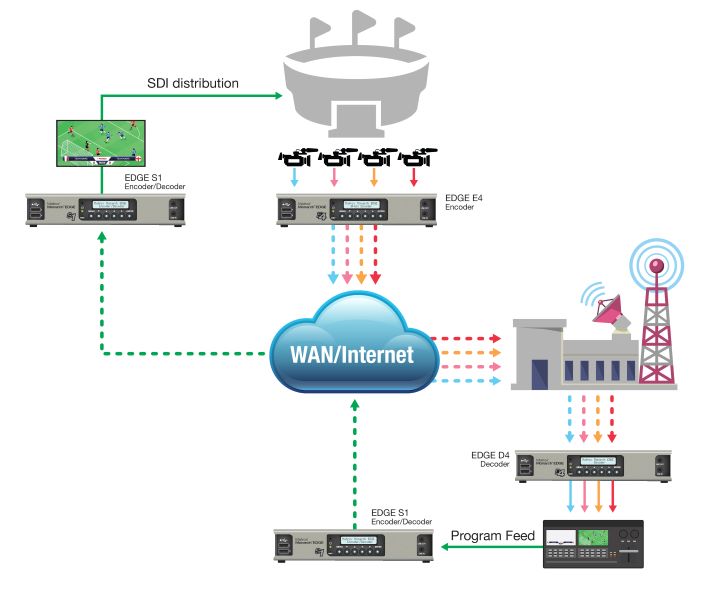Tech Insight: Matrox Video uncovers the secrets of remote cloud production for sports broadcasting

Matrox Monarch Edge encoders and decoders family
SVG Europe spoke to Daniel Maloney, technical marketing manager at Matrox Video, to find out more about what the company has been up to in the area of technology to support remote working for sports broadcasting. Matrox has pioneered a number of innovative hardware and software solutions for an array of high-tech industries. Today, it continues to be at the forefront of cutting-edge technology, working closely with its global stakeholders to solve specific real-world issues.
What are your key new technologies, solutions and enhancements for sports broadcasters that you have bought out over the last quarter? How will these technologies help sports broadcasters?
In 2021, Matrox continued to expand its remote production (REMI) and IP KVM extension portfolio to support the growing demand for REMI and remote operation workflows within sports broadcasts.
Matrox Monarch EDGE 4K/multi-HD encoders and decoders – via high-quality, synchronised, ultra-low latency camera feeds over dedicated WAN, LAN, or internet – already offered live event producers a REMI platform to expand and monetise across a broader range of sporting events beyond the primary “ball and stick” sports.
To take it a step further, Matrox introduced the Monarch Edge S1 simultaneous encode/decode appliance that allows users to provide return feeds to multi-camera production crews in the stadium or arena but also allows single-camera contributions from the field to the studio. This technology permitted live event producers to tap into a wider pool of field experts and commentators to provide their insights and expertise from any location.
Matrox Extio 3 IP KVM extenders also opened up new remote operation workflows for sports broadcasters with their ability to extend 4Kp60 4:4:4 and up to quad 1080p60 4:4:4 video support over a one Gigabit Ethernet LAN, WAN, or internet network. This video signal extension and switching network enables sports broadcasters to decentralise their operations and support multiple remote operators who can control the same system (or many others) and collaborate on the same tasks.
An Extio 3-enabled IP KVM network also means sports broadcasters have the flexibility to pick and choose the best operators in the industry, irrespective of their geographic location.

Matrox demonstrates a multi camera production with return feed using its technologies
What have been the top technology trends (in your area of expertise) during 2021 what are the hot technology trends we can expect to see in 2022 in sports broadcasting, and why will we see these?
Cloud-based live productions are certainly a hot topic at the moment. Content owners will want to take advantage of technologies and platforms to affordably cover a wider range of events and offer more online programming options or as a means to complement traditional broadcast content.
For the latter, a television network broadcasting a golf major tournament, for instance, will continue to cover the event through regular television programming but may also look to incorporate camera feeds on each hole so viewers can also follow their favourite golfer throughout the round or event. This type of hybrid platform gives viewers unprecedented event access and engagement.
What can we expect to see from your company in 2022?
Matrox has been a significant principal in developing the SMPTE ST 2110 standard, and we’re now going to bring this open-standard expertise to the end-user, enabling them to support a broader range of on-site productions.
Content and live event producers will have additional tools for in-venue sports video productions, for example, to broadcast game content to one or more screens throughout the stadium or arena to provide on-site audiences with a seamless, live viewing experience.

